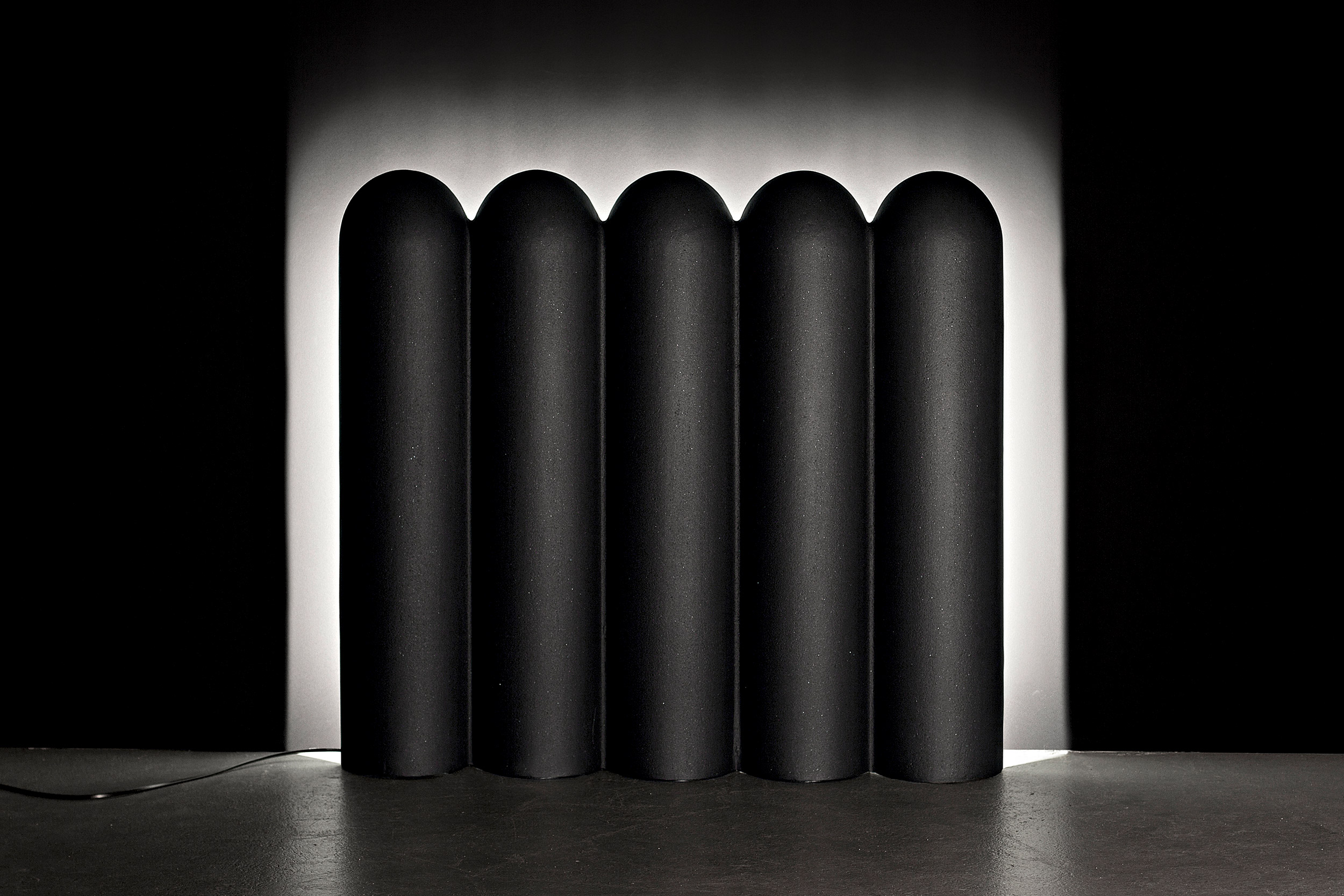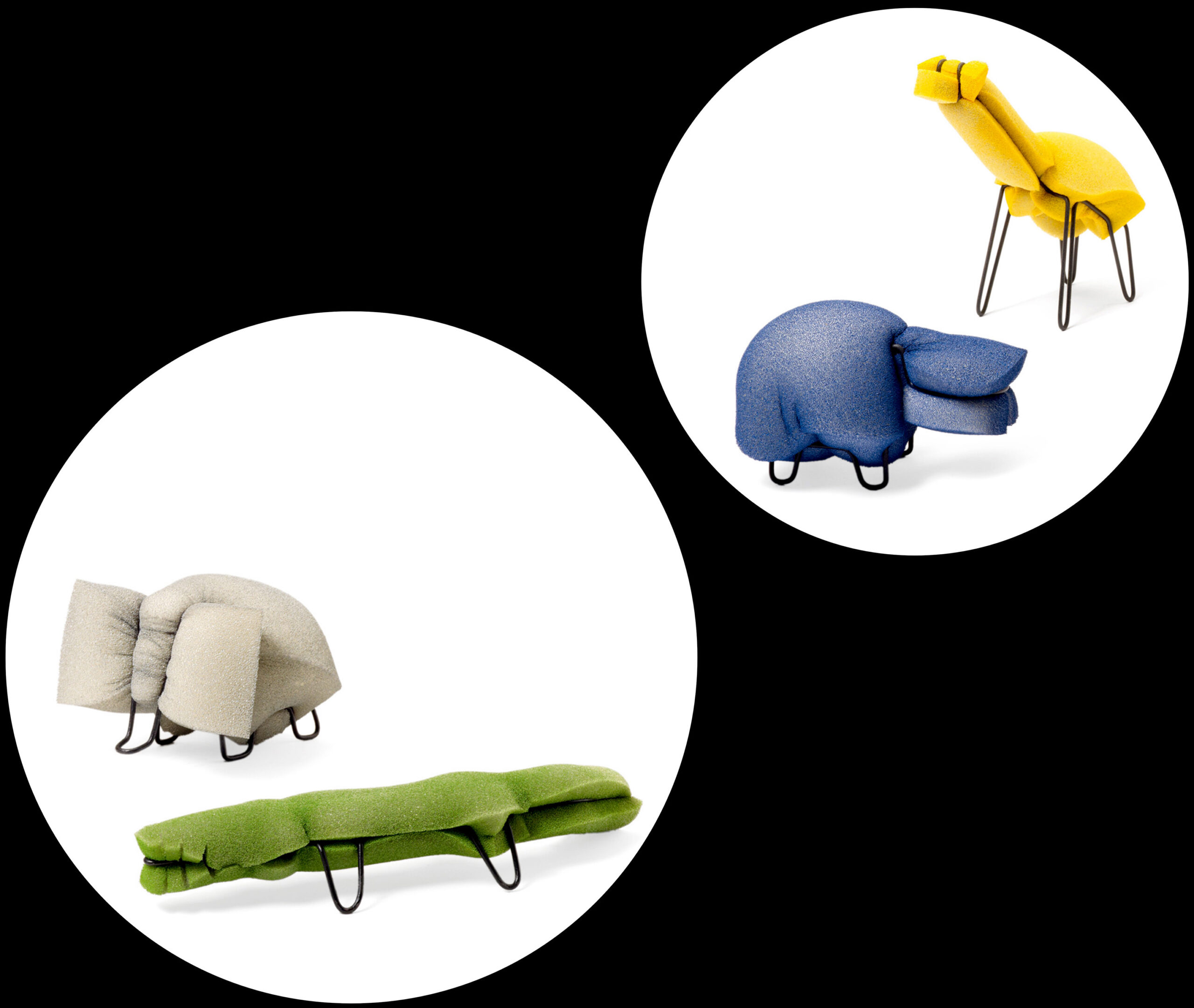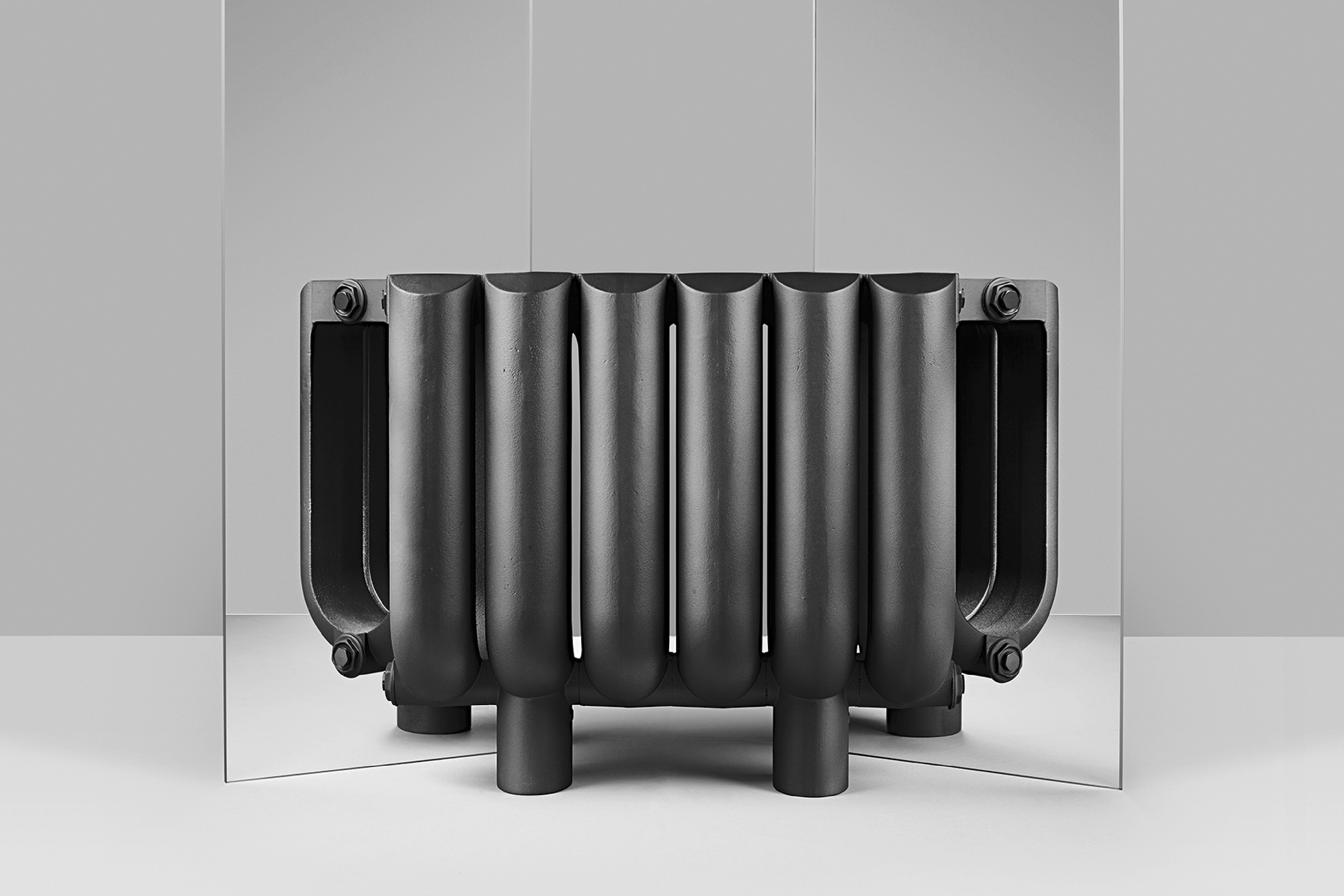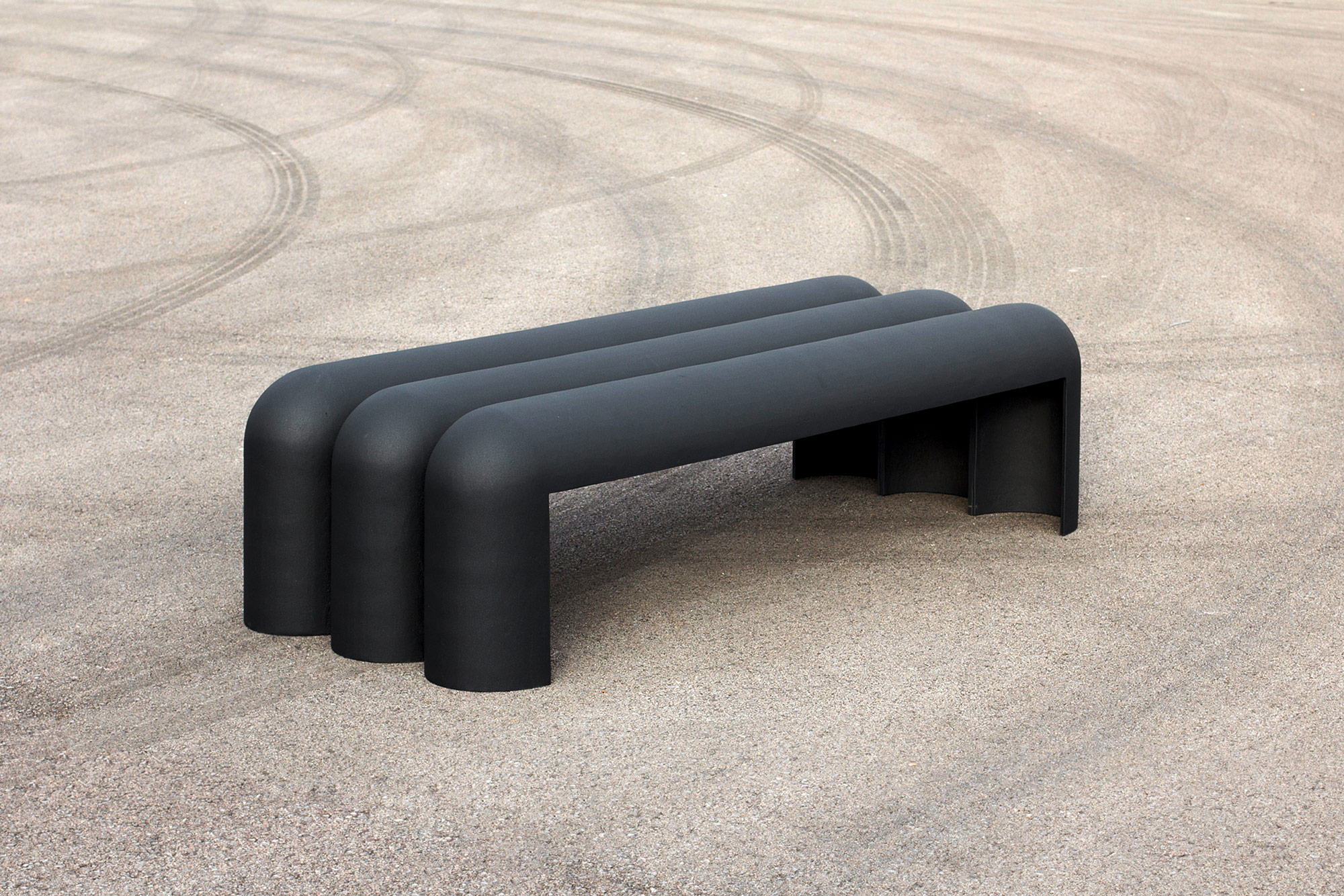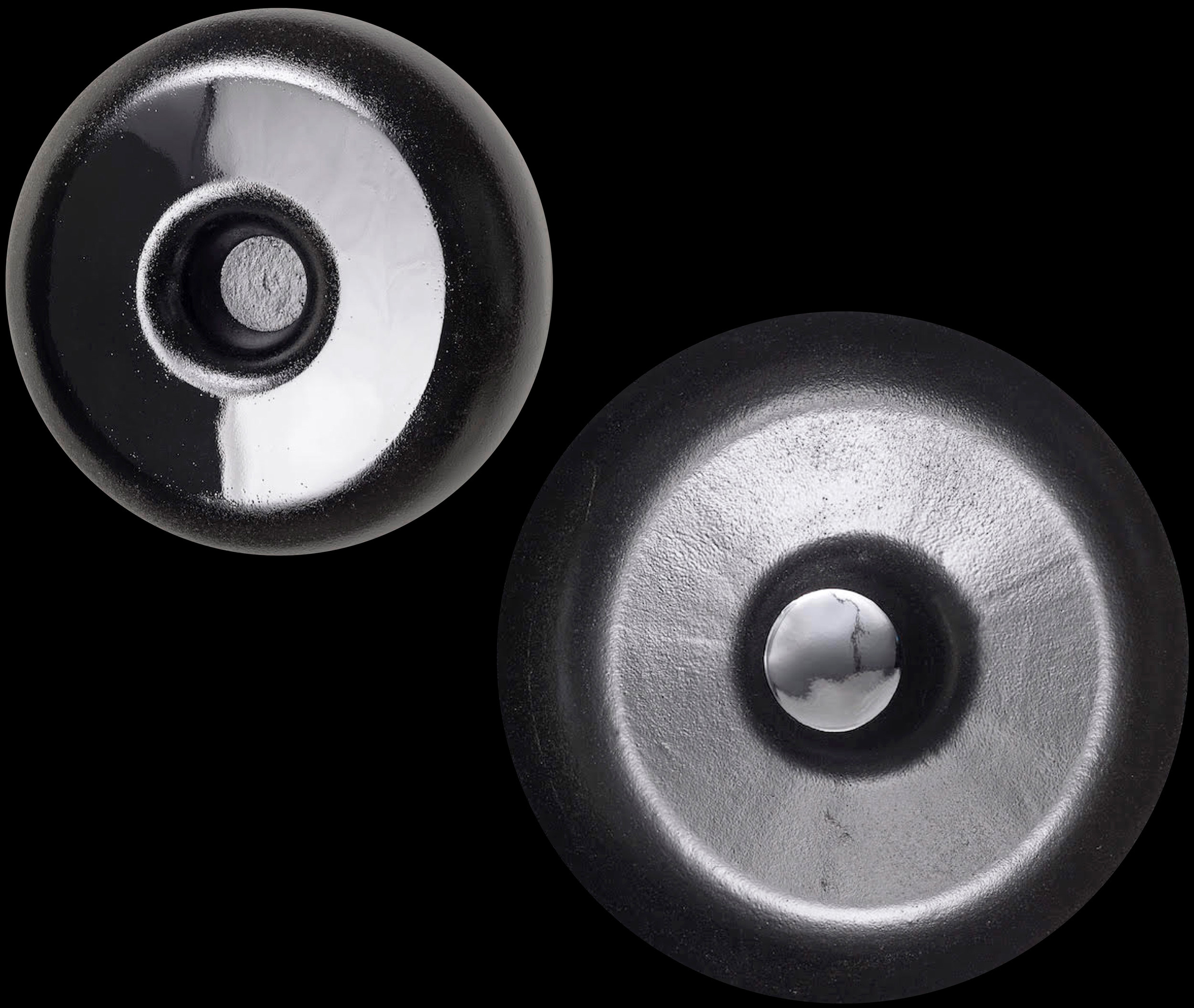Double pack
Susanna Koeberle • 12.02.2019
The designer Bertille Laguet has set off on an unusual path: After training to become a product designer at ECAL, she trained to become a professional blacksmith. At the beginning of February she received the very first prize ever awarded by the Swiss Handicrafts Association.
Designers are generally involved primarily in developing the idea of an object and less in its actual production. Becoming involved in the actual making and also specifically assuming responsibility for production processes, was already in the foreground at the beginning of Bertille Laguet’s career. The young designer originally came from France and first studied product design at ECAL in Lausanne. Her family background had a strong influence on her career. Her father owned a foundry in the French Jura. She therefore has a long association with metal as a material, which still characterises her work today. Very tangibly. If one wants to meet Bertille Laguet, one is given an address in Chexbres, not far from Lausanne. «I work in the forge», she says, «I don’t have an office any more».
What came about through a chance encounter and started as something of a hobby or brief, specialist major subject, has become her career. It led Laguet to training as a blacksmith and later taking over the business of her master Philippe Naegele. She had already demonstrated and developed her passion for metal and the knowledge of how to process it at ECAL. The core of both already exists in her very first design as a student: small animals made of metal wire. In her final project, which later even led to the establishment of her own heating company, this attachment to metal is fully explored. But more about that later.
«I like the idea that people gather around an object. Fire lies at the very beginning of humanity»
If one asks her about the reasons for her fascination with this not exactly accessible material, she will start waxing lyrical. Personal memories are combined with the properties of the material itself. Of a large cast iron stove at her grandmother’s, which she liked to touch, although she had to be careful because it was so hot. Or of moments when she snuggled up to the heater and enjoyed the warmth there while eating her breakfast. «It’s such moments of daily joys and habits, which I associate with this metal object», she explains. «I like the idea that people gather around an object. Fire lies at the very beginning of humanity», says the craftswoman. In her eyes the most important function of household items is their emotional value and less their practical function. For her, feeling at home is not necessarily associated with rooms but much more with objects. It might also be a stone – or a postcard. It would be the touch and smell that would impart strong emotions.
«Today we quickly forget the various textures, which a material can have. It’s precisely with things made using handicrafts that one still finds this variety and they contain a lot of thoughts and feelings», she believes. One of the important tasks of design for her is creating objects that interact with the human body. And precisely because heaters now lead a rather miserable existence in today’s home environment and one prefers to make them vanish if possible, she wanted to make them into a visible piece of furniture with their own presence. Make a statement with which the subject of energy consumption can also be experienced. Her final project at ECAL was the «B&M» heater, whereby the word «body» is to be taken literally in the German play on words. Thanks to its considerable volume, it can also be used as a seat or storage place. As far as its design in cast iron is concerned, Laguet was sitting on a perfect source in her father’s business. When the company «Gris Fonte» was established, she was able to come to the assistance of the floundering manufacturing facility. «For me being a designer also means assuming an active role and thinking economically», she believes. However, running the company on her own then became too much, despite support from the «Ikea Stiftung Schweiz» and advice from the «Creative Hub“. She had learnt a lot during the two years and was also able to sell a few heaters, but the young designer wanted to progress and tackle new projects. Initially still in the foundry, where she experimented with new, more affordable production methods. In this context various objects were created in limited editions: a bench, a light and a beautiful «object d’art» called «Kuro» – meaning black in Japanese.
In parallel she started to discover metal from a new side: The art of blacksmithing came into play. She thinks it’s a pity that it’s no longer possible to learn this craft in Switzerland and there are no longer any apprenticeships. As a result, an enormous amount of «savoir-faire» is being lost, which also belonged to Switzerland’s identity, she complains. She is extremely proud of the fact that at the beginning of February she received the very first prize ever awarded by the Swiss Handicrafts Association. The prize-giving ceremony took place as part of Art Genève. This isn’t by chance because art and handicrafts have always been close to each other, which the artefacts displayed also demonstrated. But the craftswoman and designer believes that there is still a long way to go in this regard. The prize is also supported by the BAK and the Michelangelo Foundation. This Foundation was founded a few years ago and has committed itself to rescuing handicrafts. She is therefore continually holding discussions about how the profession of designer and craftsman can progress further together. This is because the technical ability and creativity of craftsmen frequently remain overshadowed by the idea. The work of Bertille Laguet somewhat counters this perception.
